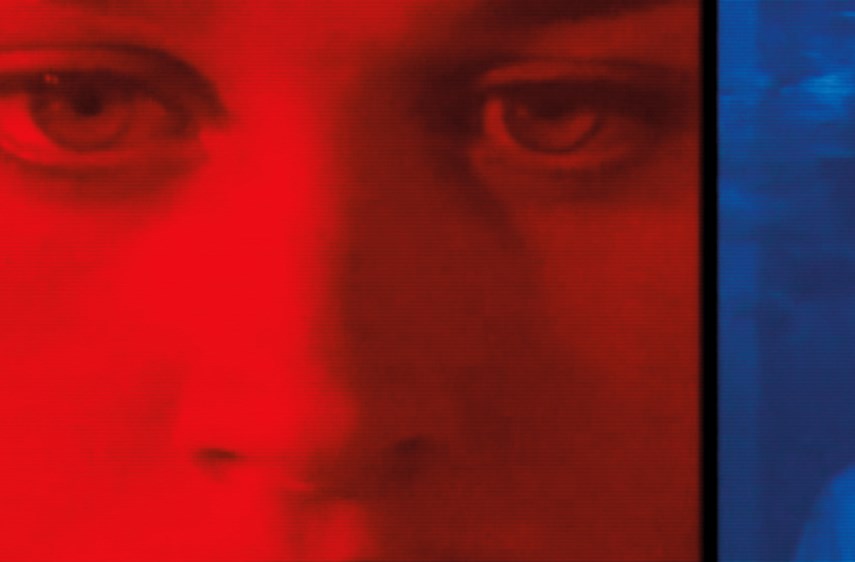Susan Hiller: Altered States, Polygon Gallery until Sept. 2. On Thursday, June 7 at 2 p.m. join curator Helga Pakasaar for a tour of the exhibit. Meet in the lobby at 1:55 p.m. Admission by donation courtesy of BMO Financial Group.
Five adolescent girls are in a room performing feats of telekinesis.
The room’s darkened, pitch black almost, but among the projections on the wall displaying a dazzling array of purples, greens, blues, oranges and reds, the viewer catches a glimpse of the 1996 comedy Matilda just as a young Mara Wilson uses her mind to bend an object to her will.
Next to Matilda, scenes of young girls or women in the midst of telekinetic acts from films by Brian De Palma, Andrei Tarkovsky and others are on display in a slightly surreal form, encompassing the dream-state logic of visual artist Susan Hiller.
That piece, titled Psi Girls, is part of a new solo exhibition devoted to Hiller’s work called Altered States on display at Polygon Gallery until Sept. 2.
“The one piece, Psi Girls, is quite hypnotic,” explains Polygon curator Helga Pakasaar. “You get caught up in first of all trying to figure out what these five projections are and how they change and then the soundtrack is quite repetitive too.”
Altered States is a total sensory experience, Pakasaar says, adding that its darkness, dizzying projections, complex displays of language, and surreal soundscapes create a feeling that lives up to the exhibition’s name.
Born in Tallahassee, Fla. in 1940 and based out of London since the early 1960s, Hiller has been an innovator in the world of visual and multimedia art for close to five decades.
While not adhering to any specific artistic movement, her groundbreaking art installations are described by some as being among the first to make innovative use of audio and visual technology.
“In the long run of course I would say she’s really been influential in part because she took this form of installation art, like multimedia installation art as an immersive environment, and really did that early on,” Pakasaar says. “And now artists – many of them – are working in that way.”
In an effort to capture the totality of Hiller’s work, Pakasaar has aimed to display pieces and installations by the artist from throughout her long career, such as the aforementioned Psi Girls (1999) and the more recent Resounding (infrared) (2013), a 30-minute visual and audio recording displayed on a large screen that creates a hypnotic environment as it blasts out a series of mysterious phenomena, such as Morse code transmissions, UFO reports, and the sound of the Big Bang as it’s calculated from cosmic background radiation and reconstructed at the University of Washington.
The pieces themselves might sound enigmatic, presenting their own kind of dreamy, mysterious logic, but the best way to experience the exhibition as a whole is to simply let it wash over you, Pakasaar insists.
“I wanted to feature these installations because they’re very spectacular and there’s an immediacy to them. I think they’re very accessible to all kinds of people and different ages,” she says. “We actually had a baby here the other day that seemed quite mesmerized by what was going on on the screen.”
Hiller’s work often examines the subconscious, evoking dreams, hauntings, and how otherworldly experiences factor into our sense of reality. She’s also obsessed with the past and the ways we’re “inundated with a lot of sensory information.”
Prior to starting her artistic career, Hiller was – and remains – a student of linguistics and anthropology, earning her PhD in 1965.
In 1991, Hiller published The Myth of Primitivism, which explores how Western cultures have tended to make historical and geographical assumptions, and ultimately consumed, the so-called “primitive other.”
“She was really instrumental in compiling essays about a very important conversation that was happening, specifically in her context in England in the late 1980s, around ethnography and questioning how we think about primitivism,” Pakasaar says, adding that the implications are still relevant today surrounding Canadian Indigenous artwork and how it’s defined – and by whom.
“The combination of who she is as someone who writes, who produces art, who’s a thinker, who’s interdisciplinary in her background … resonates in her work,” she says.
Hiller’s preoccupation with anthropology and language is on full display in one of the exhibition’s smaller, but perhaps most striking pieces, From India to Planet Mars.
The piece is part of an ongoing series Hiller started in the ’70s that showcases a collection of unconscious scribblings by people in states of lucid dreaming that relates to her fascination with language. Displayed as a series of photographic negatives in individual lightboxes in the darkened gallery, the pieces show off words that look like poetry in one instance and gibberish the next, or discourses from a foreign language one moment and dispatches from outer space in another. It’s all part of the experience, Pakasaar says.
“It raises questions about what we believe in and not believe in. We are in the era of fake news. Those questions of fact or fiction are very much on people’s minds,” she says. “I think (guests) should come away with wondering how do we understand what we see and hear? How do we comprehend mysterious phenomena? And, do we?”



